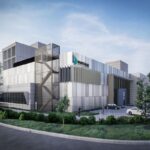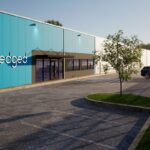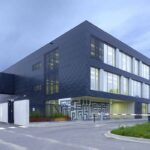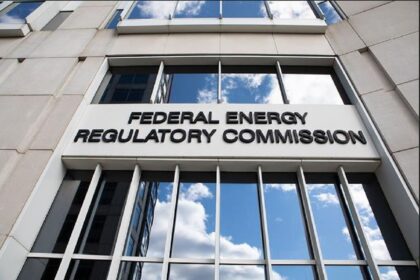The Power Strain on Data Centers in the Pacific Northwest
The rapid growth of data centers in the Pacific Northwest is facing significant hurdles due to existing grid constraints. As demand for data storage and processing capabilities soars, the region is encountering serious challenges in maintaining a stable power supply. These issues were highlighted by Brian Janous, Chief Commercial Officer at Cloverleaf Infrastructure, during a recent briefing hosted by the Northwest Power and Conservation Council (NPCC).
Janous, who previously served as Vice President of Energy at Microsoft, emphasized the urgent need to address the grid’s limitations. Despite these constraints, he pointed out that various measures could be implemented to unlock incremental capacity in the region’s power infrastructure.
Grid Constraints and Energy Demand Projections
According to a power supply adequacy assessment released in July 2024, the energy demand from data centers and semiconductor manufacturing is expected to increase dramatically. Under a “mid-case” scenario, this demand could reach as high as 34.8 million MWh by 2029, potentially climbing to 57 million MWh in more extreme cases. This surge in energy requirements is putting additional pressure on the region’s already strained power generation and transmission systems.
This challenge highlights the urgent need for increased investment in transmission infrastructure to meet the demands of both existing facilities and new hyperscale data centers under construction.
Solutions to Unlock Grid Capacity
Janous discussed potential solutions that could help address these grid constraints and unlock more capacity. One key area he mentioned was the use of grid-enhancing technologies and energy storage. These innovations could allow grid operators to maximize the existing infrastructure by improving efficiency and enabling better management of power flows.
“By incorporating energy storage systems and grid-enhancing technologies, grid operators can unlock additional capacity without the need for extensive new infrastructure,” Janous explained.
The Role of Colocated Gas-Fired Power Plants
In the short term, Janous proposed that colocated gas-fired power plants could serve as a bridge to renewable energy solutions. These plants could act as peaking capacity for the grid, providing backup during periods of high demand. Over time, these gas plants could transition to backup generators, reducing reliance on more carbon-intensive diesel generators.
This approach, advocated by both Janous and other industry leaders, allows for a smoother transition to a greener energy mix while meeting the immediate power needs of data centers.
The Need for Transmission Investment
A major challenge in the region is the lack of a regional transmission organization, which could facilitate investment in transmission projects. Currently, the fragmented nature of the system makes it difficult for developers to navigate the complexities of the power grid. Janous argued that the creation of such an organization would streamline the process and allow for more efficient investment in the region’s power infrastructure.
This shift could enable the region to better align energy generation with the growing demand for data center services, particularly as new technologies like edge computing and 5G networks further drive the need for distributed computing power.
Capital-Heavy Data Centers and Infrastructure Investment
Janous also noted that capital-rich data centers could play a pivotal role in driving infrastructure investment. Data center operators, with their substantial financial resources, could fund energy infrastructure projects, allowing for faster connections to the grid. By partnering with regional utilities, data centers could help accelerate the development of necessary transmission and power generation facilities.
“This model creates opportunities for data centers to leverage their capital to fund energy projects, ensuring they have the power they need while also benefiting the broader region,” he said.
Major Players in the Pacific Northwest Data Center Market
The Pacific Northwest has become a hub for data center development, with major tech companies like Amazon and Microsoft heavily investing in the region. Amazon has several data centers in Oregon, while Microsoft’s campus in Quincy, Washington, continues to expand. In addition, Microsoft recently purchased land in Malaga, Washington, for a new data center campus. These developments are indicative of the broader trend of increasing demand for data storage and processing in the region.
However, despite the influx of investment, the challenges related to energy and grid infrastructure remain a significant barrier to continued growth. Without a coordinated effort to expand the power grid, the region could face a bottleneck that hinders further development.
Significant Transmission Projects Underway
In response to these challenges, significant efforts are being made to expand the region’s transmission infrastructure. In October 2024, the Bonneville Power Administration (BPA) proposed 13 new transmission projects, representing a combined investment of approximately $3 billion. These projects aim to enhance the region’s power grid and ensure that it can meet future demand.
These investments, if successful, will play a crucial role in alleviating some of the pressure on the region’s power supply and support continued growth in the data center sector.
Clean Energy and Cloverleaf’s Role in the Future
Cloverleaf Infrastructure, the company where Brian Janous currently serves as Chief Commercial Officer, is actively working to address these challenges by investing in clean energy solutions for data centers. Cloverleaf’s approach involves collaborating with regional utilities to deliver scalable clean electricity solutions. The company aims to focus on key areas such as transmission, grid interconnection, land acquisition, onsite power generation, and energy storage.
In July 2024, Cloverleaf secured $300 million in funding from private equity investors NGP and Sandbrook Capital, along with contributions from its management team. This funding will be used to build clean energy data center campuses that can help reduce the carbon footprint of the sector while meeting growing energy demands.
Looking Ahead: A Coordinated Effort to Power the Future
The growth of data centers in the Pacific Northwest is undoubtedly a critical issue for the region’s energy infrastructure. As the demand for cloud services, edge computing, and data storage continues to rise, so too will the pressure on the power grid. However, with the right investments in transmission infrastructure, clean energy solutions, and grid-enhancing technologies, the region can unlock the capacity needed to support this growth while also addressing the region’s environmental goals.
Data center operators, utilities, and policymakers must continue to work together to ensure that the Pacific Northwest remains a leading hub for technological innovation without compromising its sustainability objectives.
FAQ
What is causing the grid constraints in the Pacific Northwest?
The grid constraints in the Pacific Northwest are primarily due to the rapid growth of data centers and the increasing demand for energy from the technology sector. The region’s existing power generation and transmission infrastructure is struggling to keep up with this rising demand.
What are grid-enhancing technologies?
Grid-enhancing technologies are innovations designed to improve the efficiency and capacity of existing power grids. These technologies can help manage energy flows more effectively, reducing the need for costly infrastructure upgrades.
How can gas-fired power plants help in the short term?
Gas-fired power plants can act as peaking plants, providing additional power during periods of high demand. They offer a temporary solution to meet energy needs until cleaner energy sources are fully integrated into the grid.
Why is transmission investment so critical?
Investing in transmission infrastructure is essential to meet the growing energy demands of data centers and other industries. Upgrading and expanding the grid will ensure that power generation can be distributed effectively across the region.
What is Cloverleaf Infrastructure’s role in addressing these issues?
Cloverleaf Infrastructure is investing in clean energy solutions, including transmission, grid interconnection, and onsite power generation, to help support data centers in the Pacific Northwest. The company is focused on creating scalable solutions that address both the region’s energy needs and its sustainability goals.


















